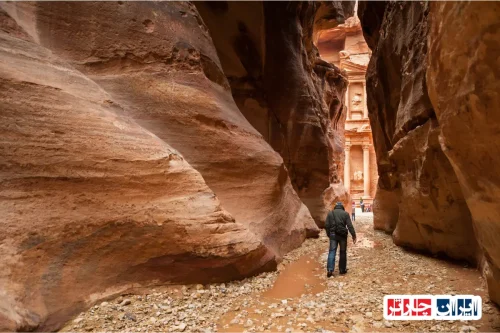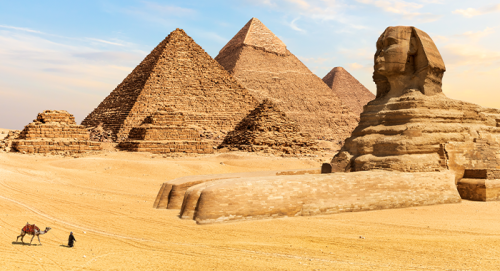Discover the Beauty of Crete Island Crete Greece: Your Ultimate Guide to the Mediterranean Gem
Crete Island Crete Greece stands out as a captivating destination that combines rich history, stunning natural landscapes, and vibrant culture. As the largest of the Greek islands, Crete offers travelers a diverse array of experiences, from exploring ancient ruins like the Palace of Knossos to relaxing on pristine beaches such as Elafonisi. The island’s unique blend of archaeological sites, picturesque villages, and lush mountains makes it an ideal spot for adventure seekers and history enthusiasts alike. Whether you’re interested in hiking through the Samaria Gorge, discovering traditional Cretan cuisine, or enjoying the warm Mediterranean climate, Crete Island Crete Greece provides an unforgettable experience. For those planning their trip, it’s recommended to visit during spring or fall when the weather is pleasant and the crowds are smaller. To make your journey even more seamless, you can explore options like private charters and guided tours, ensuring you see the best of Crete Island Crete Greece. Learn more about this incredible destination and plan your perfect getaway today by visiting Crete Island-Iran Charter.

Rich History and Mythical Tales of Crete Island: From Minoan Civilization to Modern Times
Crete Island, located in Greece, boasts a history as ancient as the dawn of civilization itself. As the cradle of the Minoan civilization, it was once a thriving cultural and economic hub, leaving behind archaeological treasures like the Palace of Knossos and intricate frescoes. Mythology plays a significant role here, with stories of the Minotaur, Labyrinth, and King Minos originating from this legendary land. Over centuries, Crete has been ruled by various empires, including Romans, Byzantines, Venetians, and Ottomans, each leaving a unique mark on its culture, architecture, and traditions. Today, visitors can explore ancient ruins, castles, and museums that narrate this rich historical tapestry. The island’s layered past makes it a fascinating destination for history enthusiasts and mythology lovers alike, offering a glimpse into a civilization that shaped the Mediterranean region. The enduring legends and archaeological sites continue to attract scholars and travelers eager to uncover Crete’s ancient secrets. From prehistoric times to the present, Crete’s history is a vibrant story of resilience, cultural exchange, and mythic grandeur. This deep-rooted heritage forms the foundation of the island’s identity and its appeal as a top travel destination in Greece.
Unparalleled Natural Attractions of Crete Island: Sacred Caves, Scenic Valleys, and Private Beaches
Crete Island’s breathtaking landscapes are among the most captivating in Greece, offering a diverse array of natural wonders. Sacred caves like Dikteon Cave and the caves surrounding Mount Ida are not only geological marvels but also hold spiritual significance, with ancient rituals performed within their depths. The island’s lush valleys, such as Samaria Gorge and Imbros Gorge, provide perfect settings for hiking, adventure, and discovering untouched nature. These valleys are home to rare flora and fauna, making them ideal for eco-tourism. Crete’s secluded beaches, including Vai Beach with its palm forest and Elafonisi with its pink sands, offer tranquil escapes from crowds. Crystal-clear waters, rugged cliffs, and hidden coves create a paradise for swimming, snorkeling, and relaxation. The combination of mountainous terrains, fertile plains, and pristine coastlines makes Crete a natural playground for outdoor enthusiasts. Whether exploring the depths of caves or lounging on quiet beaches, visitors experience the island’s natural beauty in all its diversity. These scenic landscapes not only define Crete’s geography but also contribute to its reputation as a top eco-tourism destination in Greece.
Art and Architecture of Crete Island: From Minoan Masterpieces to Venetian Elegance
Crete’s artistic heritage reflects its complex history, blending ancient Minoan artistry with later influences from Byzantium, Venice, and modern Greece. The Minoan civilization’s art, characterized by geometric patterns, vibrant frescoes, and sophisticated pottery, can be seen in archaeological sites like Knossos and Phaistos. These artifacts reveal a highly developed society with advanced craftsmanship. During Venetian rule, the island’s architecture evolved to include grand fortresses, palaces, and churches, showcasing European styles. Notable examples include the Venetian fortress of Rethymno and the historic city of Chania with its picturesque harbor and Ottoman-influenced buildings. Contemporary Crete continues to celebrate its artistic traditions through local crafts, pottery, and vibrant festivals. Visitors can admire a seamless blend of ancient and modern architecture, reflecting the island’s cultural resilience. Art galleries and museums across Crete display a rich collection of artifacts, paintings, and sculptures that narrate its artistic journey. This artistic diversity makes Crete a living museum, offering insights into its layered history and creative spirit.
Cultural Traditions and Local Customs of Crete Island: Music, Dance, and Culinary Heritage
The culture of Crete is deeply rooted in its traditions, which are vividly alive in music, dance, and cuisine. Traditional Cretan music features instruments like the lyra and laouto, creating melodies that evoke the island’s soul. These tunes are integral to festivals, religious celebrations, and social gatherings, fostering a strong sense of community. Cretan dances, such as the pentozali and sousta, are lively expressions of joy and cultural identity, often performed during weddings and local festivals. The island’s cuisine is renowned for its fresh, natural ingredients, emphasizing olive oil, herbs, vegetables, and local cheeses. Signature dishes include dakos (Cretan salad), kalitsounia (cheese pies), and succulent grilled meats. The hospitality and culinary traditions reflect the island’s long-standing connection to its land and ancestors. Festivals celebrating saints, harvests, and historical events showcase the vibrant cultural life of Crete. Visitors are encouraged to participate in local customs, taste authentic dishes, and experience the warm hospitality that defines Cretan culture. These traditions preserve the island’s unique identity amidst modern influences, making Crete a cultural treasure trove.
Ancient Sites and Historical Landmarks of Crete Island: Palaces, Fortresses, and Sacred Temples
Crete is dotted with archaeological sites that reveal its ancient grandeur. The Palace of Knossos, the largest Minoan archaeological site, is often called Europe’s oldest city and offers a glimpse into the sophisticated civilization that once thrived here. Its intricate frescoes, storied architecture, and mythological connections make it a must-visit. Other significant sites include Phaistos, Malia, and Zakros, each with their own unique ruins and artifacts. Fortresses like Rethymno and Chania’s Venetian walls highlight the island’s strategic importance during medieval times. Sacred temples and shrines, such as the ancient Minoan religious sites, showcase the spiritual life of early Crete inhabitants. Visiting these sites provides insight into the island’s historical evolution, from prehistoric times through classical and medieval eras. Guided tours and archaeological museums enrich the experience, helping visitors understand the cultural significance of each landmark. Crete’s archaeological richness makes it a living open-air museum, offering endless opportunities for exploration and discovery.
Life in Crete Island: Local Community, Traditions, and Daily Living
The daily life of Crete’s residents is a harmonious blend of tradition and modernity. Strong family ties and community bonds are central to social life, with many customs passed down through generations. Traditional crafts, such as embroidery, pottery, and weaving, are still practiced in villages, preserving local artistry. Religious festivals and saints’ days are celebrated with processions, music, and feasts, reinforcing cultural identity. The island’s economy is based on agriculture, tourism, and small businesses, with many locals engaged in farming olives, grapes, and citrus fruits. Hospitality and friendliness are hallmarks of Cretan society, making visitors feel at home. Despite modern developments, the island maintains its authentic character, with rural villages offering a glimpse into traditional lifestyles. Markets, local tavernas, and community events foster social cohesion and cultural continuity. Living in Crete means embracing a lifestyle that values heritage, family, and the natural environment, creating a unique sense of belonging and pride among its inhabitants.
Hidden Gems of Crete Island: Lesser-Known Villages and Secret Spots
Beyond popular tourist destinations, Crete hides numerous lesser-known villages and secluded spots that offer authentic experiences. Villages like Archanes, Zaros, and Anogia are rich in tradition, with charming architecture, local tavernas, and vibrant festivals. These places provide a peaceful escape, away from crowds, where visitors can immerse themselves in local life and culture. Secret beaches, such as Seitan Limania and Agiofarago, are pristine and less frequented, perfect for swimming, snorkeling, and relaxing in nature’s tranquility. Mountain trails lead to hidden waterfalls and panoramic viewpoints, revealing the island’s untouched beauty. Exploring these off-the-beaten-path locations allows travelers to discover the true essence of Crete, connecting with local communities and enjoying authentic hospitality. These hidden gems are ideal for adventure seekers, photographers, and those seeking a genuine experience of Greek island life. Discovering these secret spots enriches the journey and creates unforgettable memories of Crete’s diverse landscape and cultural richness.
Impact of Geography and Climate on Crete’s Natural Beauty and Activities
Crete’s diverse geography and Mediterranean climate shape its stunning scenery and outdoor activities. The towering mountains, such as Lefka Ori, create dramatic backdrops for hiking, mountain biking, and winter sports. The fertile plains support vineyards, olive groves, and orchards, contributing to the island’s renowned local produce. The coastline features both rugged cliffs and sandy beaches, offering opportunities for surfing, sailing, and sunbathing. The warm, dry summers are perfect for water sports, while mild winters allow for exploration and cultural visits. The varied terrain also influences local agriculture, with unique microclimates producing distinctive flavors in wine, honey, and herbs. This natural diversity supports a vibrant eco-tourism industry, attracting nature lovers and adventure enthusiasts. The interplay between mountains, valleys, and coastlines makes Crete a year-round destination for active travelers seeking scenic beauty and outdoor fun. The island’s geography and climate are fundamental to its identity as a land of natural wonder and diverse recreational options.
Adventurous Activities and Excursions in Crete Island: Hiking, Water Sports, and More
Crete offers a wide range of adrenaline-pumping activities suited for all adventure lovers. The rugged mountains and gorges provide excellent trails for trekking, with routes like the Samaria Gorge offering breathtaking views and challenging hikes. Water sports enthusiasts can enjoy surfing, windsurfing, and kiteboarding along the southern coasts, where the winds are ideal. Snorkeling and scuba diving in crystal-clear waters reveal vibrant marine life and underwater caves. For those seeking unique experiences, canyoning and rock climbing are available in designated areas. Boat trips to secluded islands and hidden beaches add an extra layer of excitement. Mountain biking through scenic trails or participating in outdoor adventure parks caters to families and thrill-seekers alike. These activities not only promote physical fitness but also allow visitors to connect deeply with Crete’s natural environment. Whether exploring on land or sea, adventure tourism in Crete guarantees memorable moments and a sense of achievement amidst stunning landscapes.
Travel Tips for Visiting Crete Island: Best Seasons, Top Attractions, and Practical Advice
Planning a trip to Crete involves choosing the right time to visit. Spring (April to June) and fall (September to November) offer mild weather, fewer crowds, and vibrant landscapes, making them ideal for sightseeing and outdoor activities. Summer (July and August) is perfect for beach lovers and water sports, though it tends to be busier and hotter. Top attractions include the Palace of Knossos, Samaria Gorge, Elafonisi Beach, and the old towns of Chania and Rethymno. To make the most of your trip, consider renting a car for flexibility, and stay in centrally located accommodations to access major sites easily. Respect local customs, try authentic Cretan cuisine, and engage with local communities for a richer experience. Packing essentials include comfortable walking shoes, sun protection, and swimwear. Always check opening hours and book tickets in advance for popular sites. With proper planning, your visit to Crete will be smooth, enjoyable, and unforgettable, offering a perfect blend of history, nature, and culture.

FAQ about Crete Island’s Rich History, Natural Wonders, and Cultural Heritage
- What is the historical significance of Crete Island?
- Crete is known as the birthplace of the ancient Minoan civilization, one of Europe’s earliest advanced societies. It features archaeological sites like the Palace of Knossos, which reveal sophisticated architecture, art, and mythology. Over centuries, Crete was ruled by Romans, Byzantines, Venetians, and Ottomans, each leaving a unique cultural imprint that shapes the island’s rich heritage today.
- What are some of the most famous archaeological sites in Crete?
- The Palace of Knossos is the most renowned, often called Europe’s oldest city, showcasing Minoan frescoes and architecture. Other important sites include Phaistos, Malia, and Zakros, each offering insights into ancient civilization. Fortresses like Rethymno and Venetian walls in Chania highlight medieval history, while sacred temples reveal religious practices of early inhabitants.
- Which natural attractions make Crete unique?
- Crete boasts sacred caves such as Dikteon Cave and Mount Ida caves, which have spiritual significance. The island’s lush valleys like Samaria Gorge and Imbros Gorge are perfect for hiking and eco-tourism. Secluded beaches like Vai with its palm forest and Elafonisi with pink sands provide tranquil escapes, along with crystal-clear waters and rugged cliffs ideal for water sports and relaxation.
- How does the art and architecture of Crete reflect its history?
- Crete’s art combines ancient Minoan frescoes, pottery, and geometric patterns with Venetian and Ottoman influences seen in fortresses, churches, and old towns. Modern Crete continues to celebrate its artistic roots through local crafts, galleries, and festivals, creating a vibrant cultural landscape that narrates its layered history.
- What are traditional cultural practices in Crete?
- Music and dance are vital parts of Cretan culture, with instruments like the lyra and laouto. Dances such as pentozali and sousta are lively expressions of local identity. The cuisine emphasizes fresh ingredients like olive oil, herbs, cheeses, and local dishes such as dakos and kalitsounia. Festivals and religious celebrations further preserve these traditions.
- Which are the key historical landmarks to visit in Crete?
- Major landmarks include the Palace of Knossos, Phaistos, and Malia. Venetian fortresses in Rethymno and Chania, along with ancient temples and religious sites, offer a glimpse into the island’s diverse past. Guided tours and museums help visitors understand the significance of these sites.
- What is daily life like for residents of Crete?
- Crete’s residents maintain strong family and community ties, practicing traditional crafts like embroidery and pottery. Agriculture, especially olive and citrus farming, remains vital. Festivals, local markets, and hospitality are integral to social life, blending tradition with modern living.
- Are there hidden or lesser-known spots worth exploring?
- Yes, villages like Archanes, Zaros, and Anogia offer authentic experiences away from tourist crowds. Secret beaches such as Seitan Limania and Agiofarago are pristine and less crowded. Mountain trails lead to waterfalls and panoramic viewpoints, perfect for adventure seekers and explorers.
- How does Crete’s geography influence its climate and activities?
- The mountainous terrain, including Lefka Ori, creates ideal conditions for hiking and winter sports. Fertile plains support vineyards and orchards, while the coastline offers beaches for swimming, sailing, and surfing. The Mediterranean climate ensures warm summers and mild winters, facilitating year-round outdoor activities.
- What adventurous activities can visitors enjoy in Crete?
- Hiking in gorges like Samaria, canyoning, rock climbing, and mountain biking are popular. Water sports such as windsurfing, kiteboarding, snorkeling, and scuba diving are widely available. Boat trips to secluded islands and beaches add to the adventure, making Crete ideal for thrill-seekers.
- What are some practical travel tips for visiting Crete?
- The best time to visit is spring and fall for pleasant weather and fewer crowds. Summer is perfect for beaches and water sports. Renting a car provides flexibility to explore remote areas. Key attractions include Knossos, beaches, and old towns. Respect local customs, try authentic cuisine, and plan ahead for popular sites to ensure a smooth trip.
- How does the local cuisine reflect Crete’s culture?
- Crete’s cuisine emphasizes fresh, natural ingredients like olive oil, herbs, vegetables, and cheeses. Signature dishes include dakos, kalitsounia, and grilled meats. Food is often enjoyed during festivals and family gatherings, reflecting the island’s hospitality and rich culinary traditions.
- What role does mythology play in Crete’s identity?
- Mythology is deeply embedded in Crete’s cultural identity, with stories of the Minotaur, Labyrinth, and King Minos originating from the island. These legends are celebrated through archaeological sites, museums, and local traditions, attracting visitors interested in myth and history.
- Why is Crete considered a top travel destination in Greece?
- Crete offers a unique combination of rich history, stunning natural landscapes, vibrant culture, and warm hospitality. Its archaeological sites, scenic gorges, beautiful beaches, and authentic villages make it suitable for diverse interests, ensuring an unforgettable experience for every traveler.























